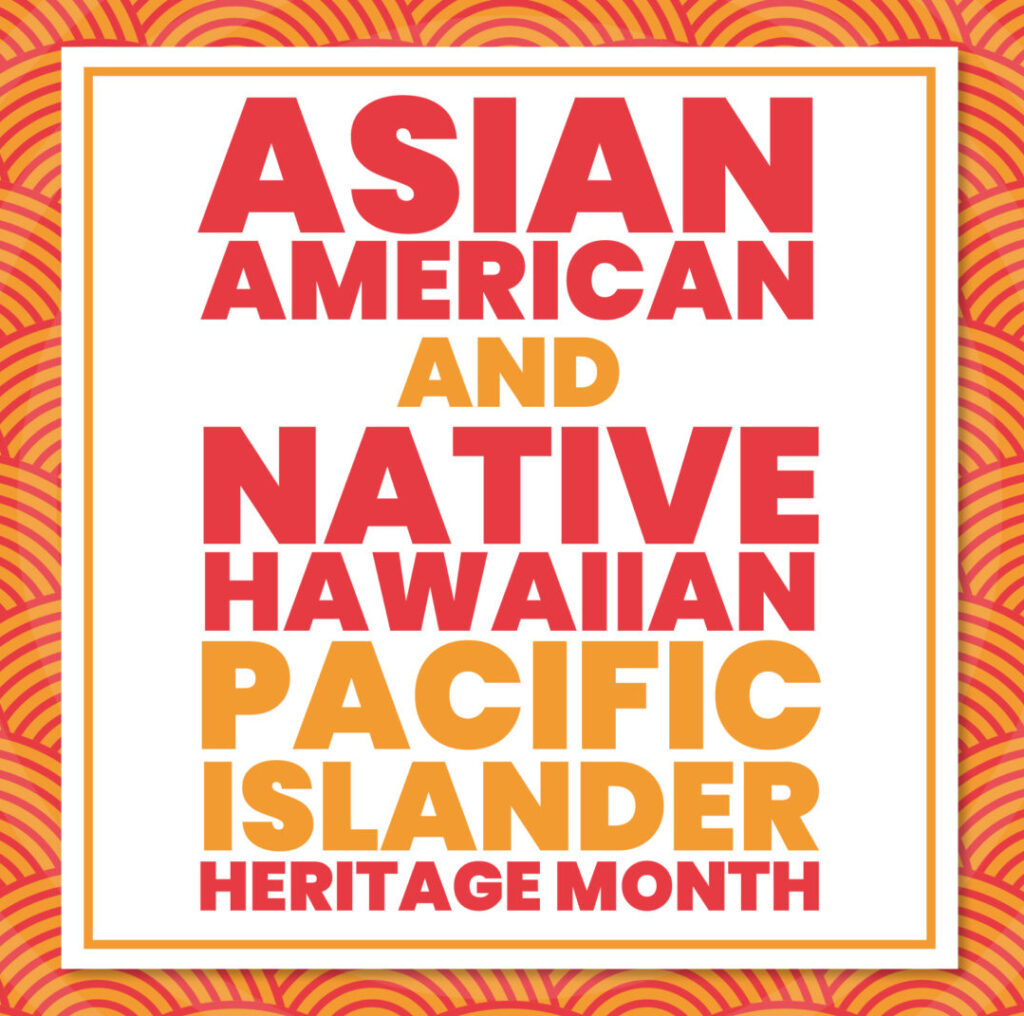May is Asian American, Native Hawaiian and Pacific Islander Heritage Month (AANHPIHM). We recognize that for many of us, our heritage exists beyond one month, but having our country, our colleges, our communities recognized and celebrated as contributors to the American experience is important and valued. Often, we are dismissed and/or ignored. And yet, there are so many of us…

According to the U.S. Census report, “A More Diverse Nation,” AANHPIs were the fastest growing racial group from 2000-2019 – an increase of 82.2% for Asians and 72.7% for Native Hawaiians and Pacific Islanders. In community colleges, the American Association of Community Colleges reported an increase from 2010-2021 of 6.3% of AANHPI students. Yet, AANHPIs have continually been labeled as the “model minority” and often are not recognized or acknowledged as a people of color, resulting in our histories and cultures being dismissed. Additionally, the stereotype of AANHPIs as foreigners or outsiders continues to exist and be perpetuated.
And yet again there are so many of us because we are often lumped together. And, while many share a history of ancestry of arriving to the U.S. as immigrants, it is essential that people understand that the broad AANHPI moniker represents more than 50 different ethnic groups who have unique languages, cultures, experiences, income, voices and visibility. Within almost every racial category box is variation and difference, but many also embody and share the spirit and promise of America’s inclusion and unity. Thus, recognition and accurate representation, not just in mainstream mass media, but also in American society and culture are not just important but also necessary for current and future generations.
As a federally recognized month of observance, May as Asian American, Native Hawaiian, and Pacific Islander Heritage Month is very special for AANHPIs across the nation individually and collectively. Those in our community colleges not only celebrate and learn about the many ways they have contributed to our American history, culture and society, but they also recognize the significance of AANHPI inclusion and influence on the community as a whole.
Advocacy on many fronts
NAPIC, the National Asian Pacific Islander Council, is an affiliated council of the American Association of Community Colleges (AACC). NAPIC leaders have been actively engaged with their partner organizations locally and nationally to influence and lead AANHPI presence. Through their voices and experiences with their alliances and partners, NAPIC has been transcending organizational and cultural boundaries to create spaces for better reflection and to advance the value and power of diversity and unity for community colleges as a place for all.
Within the AACC community, NAPIC has established and sustained a strong and viable alliance with NCBAA (National Council on Black American Affairs) and NCCHC (National Community College Hispanic Council) for more than 10 years with our highly successful AACC pre-convention workshops and spotlight sessions on leadership development and engagement with leaders of color. In addition, the three councils have worked together on advocacy actions, letter-writing campaigns, and testifying on forums and more in sharing values on DEI issues and challenges such as condemning anti-hate and violence incidents (i.e., George Floyd and anti-Asian) and defending DACA for our community college students.
While many share a history of ancestry of arriving to the U.S. as immigrants, it is essential that people understand that the broad AANHPI moniker represents more than 50 different ethnic groups who have unique languages, cultures, experiences, income, voices and visibility.
Another example for NAPIC’s action-oriented leadership is the reconnection with the White House Initiative for AANHPIs (WHIAANHPI) during the last two years, which has allowed for both WHIAANHPI and NAPIC to share and provide timely and mutually beneficial information, resources and more. Further, NAPIC has been able to inform WHIAANHPI Executive Director Krystal Ka’ai and staff about critical issues that impact our community college students, such as AANAPISI-grant funding and sustainability, the need for data disaggregation, and implications of national policy and legislative decisions on AANHPIs and community colleges as a whole.
In addition, NAPIC has received current and updated information to share with our members on federal grants and resources and strategic interactions with federal agencies, not just the U.S. Department of Education. NAPIC has also been invited to provide input and feedback to the Biden-Harris National Strategies for Asian Americans, Native Hawaiians, and Pacific Islanders and the President’s Commission on AANHPIs.
Raising awareness
An illustration of NAPIC’s influence and alliance at the state level occurred on April 12 in California, when NAPIC co-sponsored a webinar with the Asian Pacific Americans in Higher Education and the California Community Colleges Chancellor’s Office. The webinar, titled “Representation Matters: Creating Inclusive Campus Environments for AANHPI Student Success,” included learning objectives and activities that increased the knowledge and understanding of community college leaders and personnel on the on-going anti-Asian hate and violence in our society, and the systemic inequities in the hiring of AANHPI faculty, staff and administrators. Effective institutional practices, tools and resources to increase AANHPI inclusion and sense of belonging were also provided.
For many years, Asian American, Native Hawaiian, and Pacific Islander faces and voices were not seen or heard as part of mainstream U.S. culture, society, media and leadership. Including in higher education, AANHPIs were often considered “the Other” and not always counted or present because of decades-long stereotypes and myths. Yet, each of the more than 50 communities and cultures under the wide AANHPI umbrella has unique and dynamic voices that form and contribute to being part of the American Identity.
This year’s the White House shared how AANHPI Heritage month is about being Visible Together, which exemplifies the power of identity, inclusion and unity. It is imperative to see and hear the AANHPI stories, so that the value we bring, contribute and enrich our collective body and efforts — especially during these times of fear, insecurity and the unknown. As higher education and systems are assaulted with policy and DEI challenges, it is vital for our future to have an equitable, inclusive and diverse leadership for all to succeed and flourish.
* * *

Rowena Tomaneng (left) is president of San José City College (California) and president of the National Asian Pacific Islander Council (NAPIC), an affiliated council of the American Association of Community Colleges.
Stephanie Fujii is president of Arapahoe Community College (Colorado) and NAPIC president-elect.





